REVIEW: Georgy Costakis. “To allow departure from the USSR…’ at Tretyakov Gallery, Moscow, by Anna Prosvetova
Above: Portrait of Georgy Costakis by Oleg Tselkov, 1976 / Courtesy of Tretyakov Gallery. Photo by Anna Prosvetova
Georgy Costakis (1913 – 1990) was one of the most significant Soviet collectors, may be the first one, who seriously started collecting Russian avant-garde and Soviet non-conformism in all their diversity. The exhibition at the Tretyakov Gallery brings works that Costakis passed on to the museum before leaving the country in 1977.
Divided into five different sections on Russian avant-garde, Russian icons, folk toys, Soviet alternative art and paintings by Costakis himself, the exhibition starts with a reconstruction of the collector’s apartment in Moscow, displaying photos of his family and friends from different years to recreate a circle of artists and other figures around him.
Works in Costakis’s collections are widely known on contrary to the persona of the collector himself. Having Greek origins, Costakis was born and worked in Moscow as an embassy driver. Attracted by the striking palette and unusual compositions, Costakis started acquiring works by Russian avant-garde artists, which by many contemporaries were seen as ‘pointless rubbish’. Throughout his life Costakis dreamed about a museum of modern art to be opened in Russia, where he would be able to place his collection. However, due to the political situation, Costakis’s activities attracted attention of the state security forces, and the collector was forced to leave the country. In 1977 he transferred a major part of his collection to the Soviet government that allowed him to take the rest of the works with him to Greece.
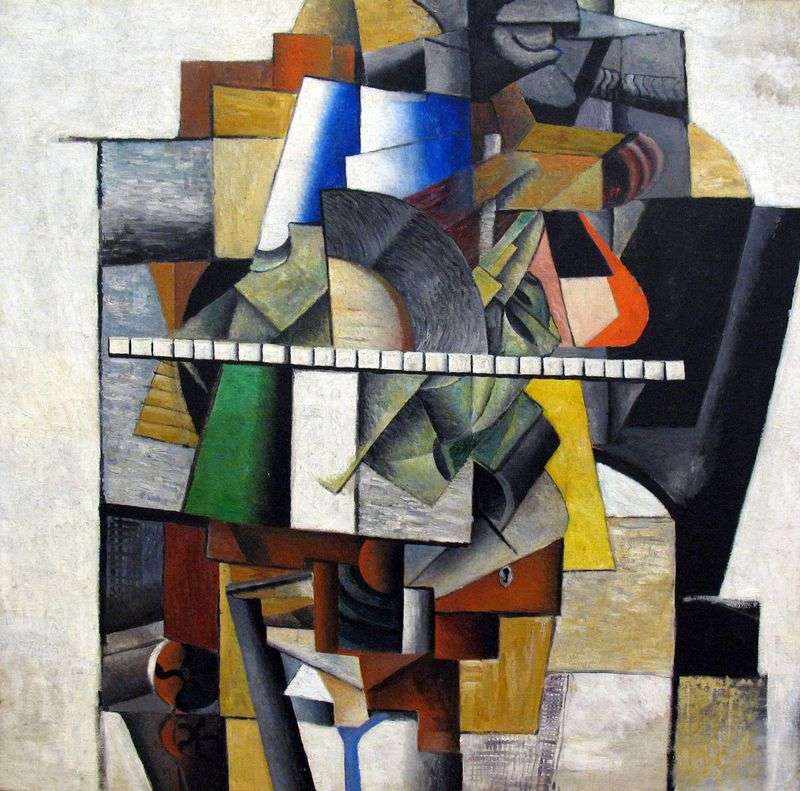
Portrait of the artist M.V. Matiushin by Kazimir Malevich, 1913 / Courtesy of Tretyakov Gallery
The section of Russian avant-garde constitutes the biggest part of the display, reflecting the main interest of the collector. The overall display of this movement split in smaller sections, reflecting early works, Cubo-Futurism, paintings from the later period and various experiments with pictorial form of 1930s. Labels next to the works carry all familiar names, including Wassily Kandinksy, Kazimir Malevich, Solomon Nikritin, Lubov Popova, Pavel Filonov, Aristarkh Lentulov, Marc Chagall, Alexandra Ekster and others.
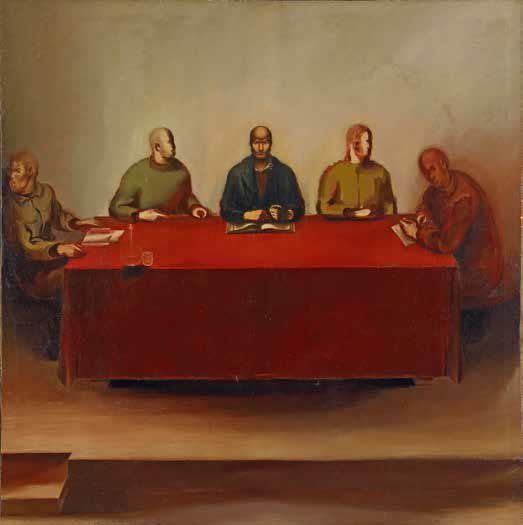
The People’s Court by Solomon Nikritin, 1934 / Photo courtesy of Anna Prosvetova
Previously non-exhibited works of several artists have been specially restored for the exhibition, including Vasiliy Chekrygin’s Portrait of a Man (1914), Kuzma Petrov-Vodkin’s On the Tram (1936), Alexander Rodchenko’s double-sided works, Surrealist Abstraction (1943) and Wrestlers (1935-1938) and Ivan Kluin’s Self-portrait (1909-1910) and Suprematist Composition (1910s). The avant-garde section also includes a wide selection of works on paper of the same period, including stage and costume designs and spatial-force constructions by Lubov Popova, sketches and drawings by Yakov Chernikhov, designs by Alexandra Exter and Gustav Klutsis.

Installation, 1922, by Luybov Popova / Courtesy of Tretyakov Gallery
One of the intriguing highlights of the show is Costakis’s collection of folk toys, bought by the collector from Nikolay Tseritelly, a Moscow theatre actor. Costakis left this unique assembly to the Ministry of Culture and it was transferred to the ‘Tsaritsino’ museum preserve in 1992. For this exhibition curators selected examples of clay and wooden toys produced in different historical centres such as Sergiev Posad, Dymkovo, Abashevo and Bogorodskoye. Displaying them along the colourful and dynamic works of Russian avant-garde, curators create an opportunity to examine the connection between these works from distant historical periods of Russian history.
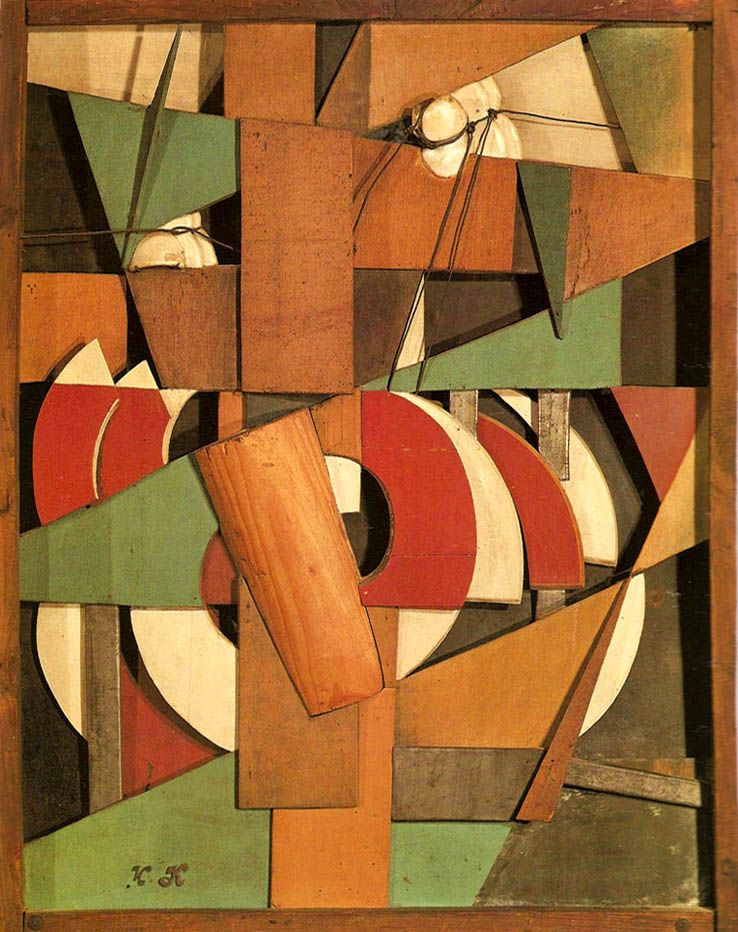
Ivan Klyun, Landscape racing by, 1913 / Courtesy of Tretyakov Gallery
In 1960s-70s Costakis became attracted to emerging non-conformist Soviet artist, such as Alexey Zverev, Francisco Infante-Aran, Vladimir Veisberg, Lev Kropivnitsky, Oscar Rabin and Oleg Tselkov. These artists were participants of several underground art groups, such as Lianozovo and the 20 Moscow Artists Group, which appeared after the infamous 1962 Manezh exhibition New Realists, labelled by Nikita Khrushchev as ‘anti-Soviet’. Costakis became a close friend with these artists, collecting their works despite the danger of prosecution.
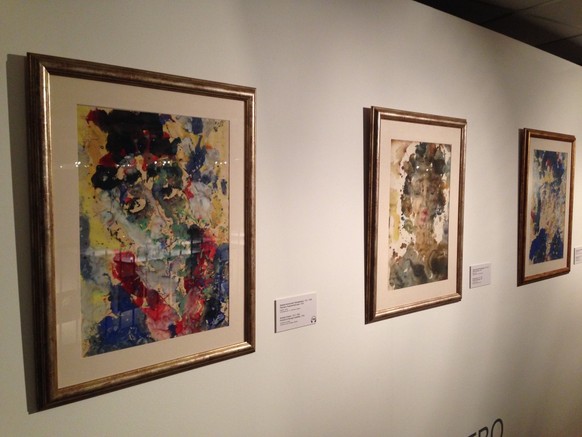
Display of Anatoly Zverev works / Photo courtesy of Anna Prosvetova.
Accompanied by digital copies of archival materials and images of objects kept at the Saloniki Museum of Modern art and the Costakis family, the display is a great chance to learn more about the fascinating figure of the collector. For the first time in many years visitors are able not only to explore the collector’s interests in their diversity, but also to discover him as a painter. Costakis took up the brush after his emigration, in 1978, giving preference to brightly coloured landscapes, influenced by works from his art collection. Today these works are kept in private collections of his daughters.

Landscape, 1988, by Georgy Costakis / Photo courtesy of Anna Prosvetova
Exploring the relatively small exhibition space, one could be amazed by the number and variety of works it accommodates. The artists’ names and paintings firmly hold their place in the history of art and are all very familiar to both Russian and foreign visitors. However, this wonderful initiative of the Tretyakov Gallery to display together available works from the Costakis collection tries not only to trace different movements in Russian art, but to reveal what could have been lost or forgotten without efforts of Georgy Costakis.
For more information on the exhibition please visit the website.
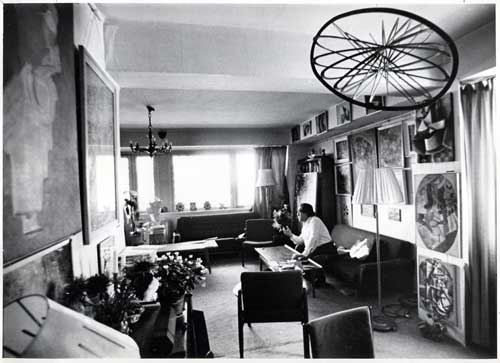
Georgy Costakis in his Moscow apartment in mid-1970s. Photo by Henri Cartier-Bresson / Courtesy of www.ekathimerini.com